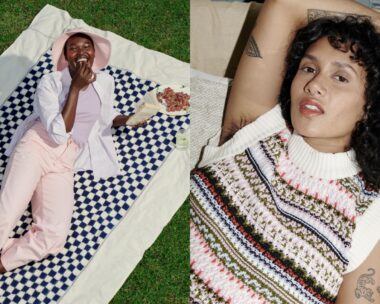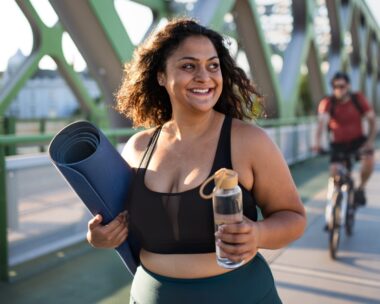It creates some of the most beautiful products in the world but the fashion industry has a surprisingly ugly side. In fact, it’s the second-largest polluter globally after the oil industry, according to high-end brand Eileen Fisher. Behind the flashy runway shows lies a path of destruction, especially in developing countries where more than 60 per cent of clothing is made, according to leading sustainability news site EcoWatch.
Crisp cotton t-shirts may look clean, but cotton is one of the most chemically dependent crops in the world, with numerous studies showing a spike in cancer in cotton workers is related to the chemicals used to grow the crop. It also sucks up water resources. It takes more than 20,000 litres of water to manufacture just 1kg of cotton, according to industry resource The Business of Fashion, which is equivalent to a t-shirt and a pair of jeans.
While man-made fibres do not rely on so much water, the manufacturing process and dyes involved harm both people and the planet. Author George Elvin says it takes 70 million barrels of oil to create the polyester used in fabrics each year. It is this fibre that is used to quench global shoppers’ insatiable thirst for new fashion. The world consumes around 80 billion new pieces of clothing each year – five times the number two decades ago, according to The True Cost, a documentary which explores the dirty tactics of the fashion industry. Fast fashion, where clothes are produced quickly and sold at low cost to create constant consumer demand, has left designers relying on cheaper, more damaging manufacturing practices to compete in the market place.
Along with the rise of fast fashion has come the inevitable backlash from increasingly eco-conscious consumers who want to know exactly what’s involved in making the clothes they buy. A positive result is designers are under pressure to rethink how they create clothes. Much like restaurants that focus on farm-to-table food, the farm-to-closet fashion movement aims to track the clothes’ manufacturing process from beginning to end in the hope increased transparency will combat poor working conditions and the industry’s environmental impact on the planet. Sustainable fashion, where brands take responsibility for the resources they use, is gaining ground.
To help consumers identify sustainable brands more easily, a number of organisations, including Child Labour Free and Baptist World Aid, have launched accreditation schemes to support ethical businesses and expose others whose practices leave much to be desired. Baptist World Aid rates a range of New Zealand and Australian companies on how their efforts to reduce exploitation in their supply chains and empower workers. Last year’s report revealed a surprising number of companies are still grappling to understand exactly who makes their clothes.
Tools like the Good On You app allow shoppers to hold brands to account at the touch of a button. The app rates companies on three key principles: how they treat people, the environment, and animal welfare. Users can look up specific brands or search standard online shopping categories to find detailed ratings, including any third-party certificates held. The app also enables shoppers to ask brands questions and give feedback, and it offers sales promotions on top-rated labels.
Leading global fashion chains such as H&M and Zara, often dubbed the McDonald’s of fast fashion, are responding to consumer demand with sustainable initiatives – Zara even received an A grade from the Baptist World Aid report last year. H&M, which received a B+, has pioneered a recycled polyester fabric made from plastic washed up on beaches, named Bionic, for its latest Conscious Exclusive collection.
Supermodel and philanthropist Natalia Vodianova, who stars in the Conscious campaign, says: “It’s amazing to see the advances in sustainable fabrics that are used in the collection, pointing towards a more sustainable future for all fashion.” The collection will be on sale in the Auckland store on 20 April.
It’s not just the international fashion giants that are tackling the issue. A number of New Zealand brands are leading the way by producing fashion that doesn’t cost the earth. Here, we take a closer look at six standout labels.
Maggie Marilyn
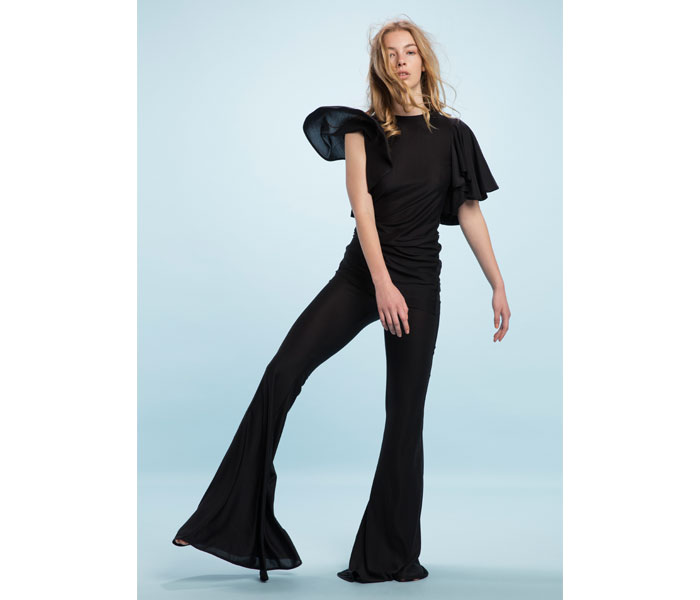
**maggiemarilyn.com|@maggiemarilyn
Young New Zealand designer Maggie Hewitt has a lot to be proud of. The first collection of her label Maggie Marilyn was snapped up by luxury online retailer Net-a-porter and she was named by Vogue.com as one of 16 new designers “who won 2016”. She is also a champion of sustainable fashion.
Sustainability is behind every decision Hewitt makes and she sees it as an integral part of her brand’s identity, rather than a convenient marketing gimmick. “First and foremost I want to be a beautiful brand that women want to buy,” she says. “It’s just the cherry on the top that it’s also ethically made.”
Her third collection features colourful silk-lined cashmere coats and sheepskin-lined denim jackets. These luxurious materials, stitched by local craftspeople, are sourced from New Zealand fabric merchants who ensure their imports are made ethically, including safe working conditions and fair wages. “People are enquiring more about where their food comes from, where their clothes come from,” she says. “It’s really important for designers to lead the way, to promote having an ethically conscience brand and allow consumers to understand that a bit more.”
Hewitt believes our focus should be on quality not quantity. The designer promotes a slow fashion mind-set, urging shoppers to find joy in just three or four quality pieces each season, instead of purchasing a new outfit for every dinner date.
“Ultimately consumers have the power because they’re the ones who make it a trillion-dollar global industry,” she says.
holi

When British designer Stella McCartney joined a panel discussion at the London College of Fashion last year she had a simple point to make: “Fashion really is getting away with murder.” It’s a sentiment echoed by Kiwi designer Kelly du Toit, who started holistic outerwear brand holi two years ago.
“The price of fashion is finally coming more into the mainstream media and it’s a killer,” says du Toit. “Quite literally on our environment and the people behind the scenes in factories overseas.”
The designer, who lists child labour, extreme poverty and poor working conditions as blights on the industry, aims to challenge the status quo by educating consumers about where their clothes come from. She sources organic bamboo from Fairtrade factories in China and local merino wool for her trans-seasonal designs. She knows each Hawke’s Bay-based seamstress personally and ensures price tags and packaging are made from recycled paper.
For du Toit, being sustainable means producing high-quality, timeless designs. “For a customer to open their closet in 10 years and still have a holi garment is something I dream of,” she says.
Kowtow
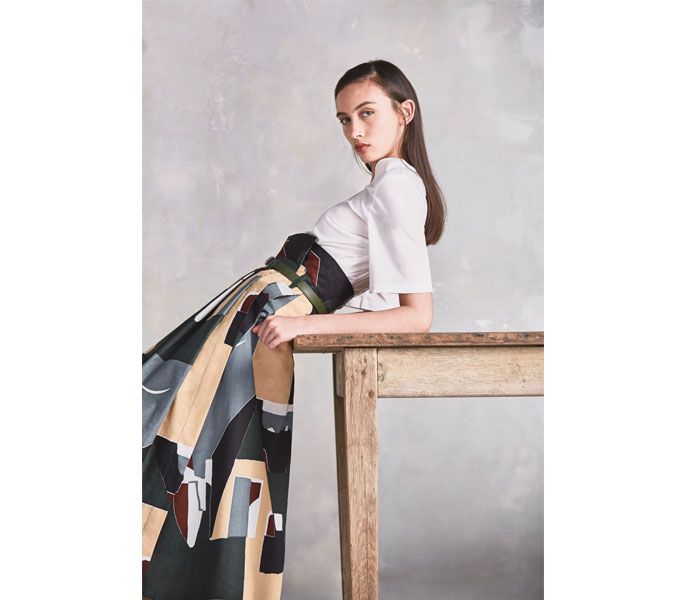
kowtowclothing.com|Kowtowclothing
The Bangladesh Rana Plaza disaster in 2013 sent shockwaves through the fashion industry when more than 1,100 garment factory workers perished after the building collapsed and the poor working conditions of people supplying some of fashion’s biggest brands were exposed. For Kowtow designer Gosia Piatek, the disaster marked a shift in the sustainable fashion movement as the headlines made their way around the world.
Kowtow has long been ahead of the sustainability curve, however, having traced its clothing “from seed to garment” for more than 10 years to ensure the best environmental and ethical decisions are made. The label validates this claim with a number of environmental and social responsibility certificates, including Fairtrade.
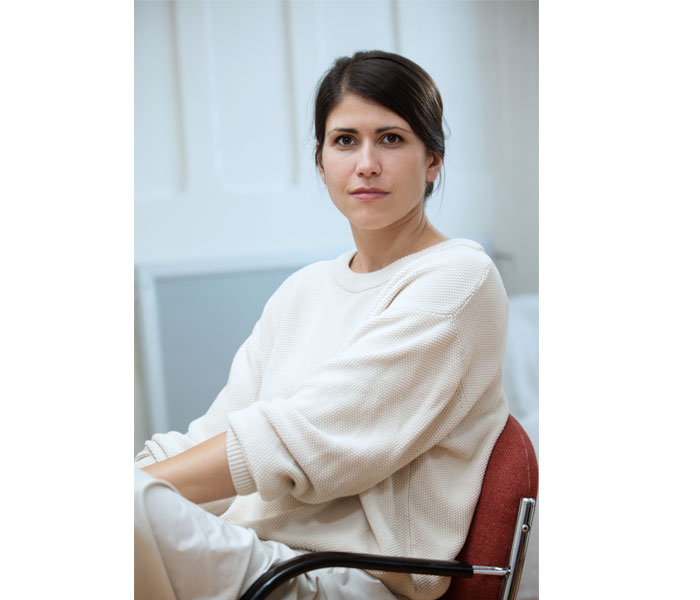
Gosia Piatek, designer at Kowtow.
According to the European Union, a quarter of the chemicals produced in the world are used in textiles. Kowtow seeks to minimise its impact on the environment by using Global Organic Textiles Standard-approved water-based ink for its prints and dyes and works with sustainability accredited suppliers for everything down to its trims. Although Piatek admits choices are limited when vetting sustainable suppliers, her commitment to asking the hard questions has earned the brand a keen following.
NOM*d
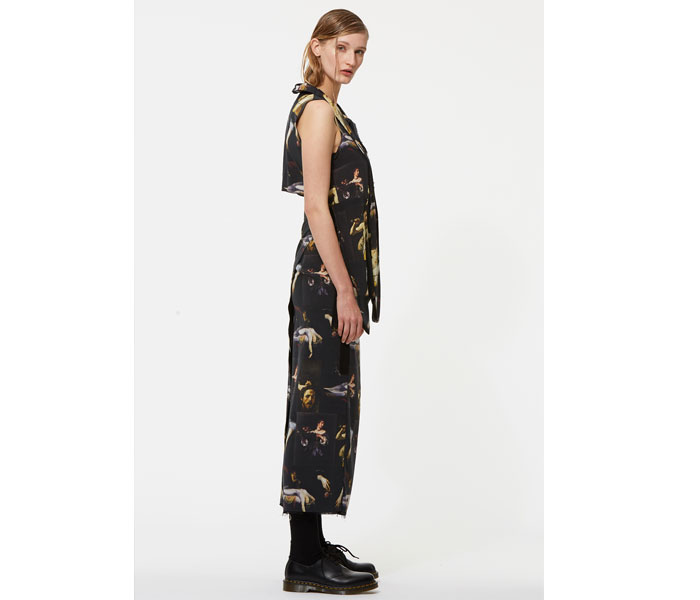
This trusted Dunedin label’s underground image has been strategically detached from mainstream fashion for around 30 years, but its use of accredited Child Labour Free resources and New Zealand-based production methods are thankfully becoming more widespread in the industry.
Designer Margarita Robertson says demand for sustainable fashion changed dramatically with the emergence of fast fashion. Since the late 1990s trends have come and gone faster than you can say “I’ll take the cargo pants”, and both designers and consumers have started to rethink the ethics behind their production.
Although Robertson says it takes more effort to ensure complete transparency in the production line, it doesn’t necessarily have to be expensive for the consumer in the long run. “It’s more about using quality manufacturing to lengthen the life of a garment and investing in pieces that have been sustainably made and therefore will have a much longer shelf life,” she says.
Ovna Ovich
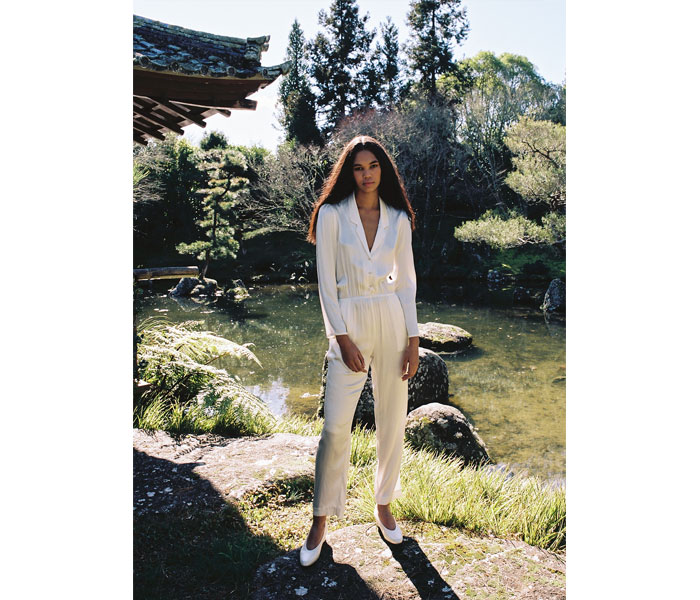
Blurring the line between feminine and masculine design, Ovna Ovich is a quietly beautiful womenswear brand, but this is not where it ends. Designer and Ethical Fashion Forum Fellowship 500 Member Marina Davis says the purpose of the brand is to produce environmentally and socially aware collections. This is hardly surprising, given she was head designer at Kowtow before starting her own brand.
Made in New Zealand, the label is doing its bit to invest in local businesses and industry. “Ovna Ovich is a work in progress as we continue to build on improving the impact of our footprint,” says Davis. The designer focuses on using environmentally friendly fabrics. Polyester can take hundreds of years to break down when clothes are discarded in landfill so Ovna Ovich garments are primarily made of silk, linen and New Zealand wool fibres for their renewable and sustainable characteristics.
Patterns are drawn digitally to limit material wastage and any waste that does occur is repurposed in the form of new clothing samples or carpet underlay, insulation, mattresses and cushion filling for local businesses.
Space between
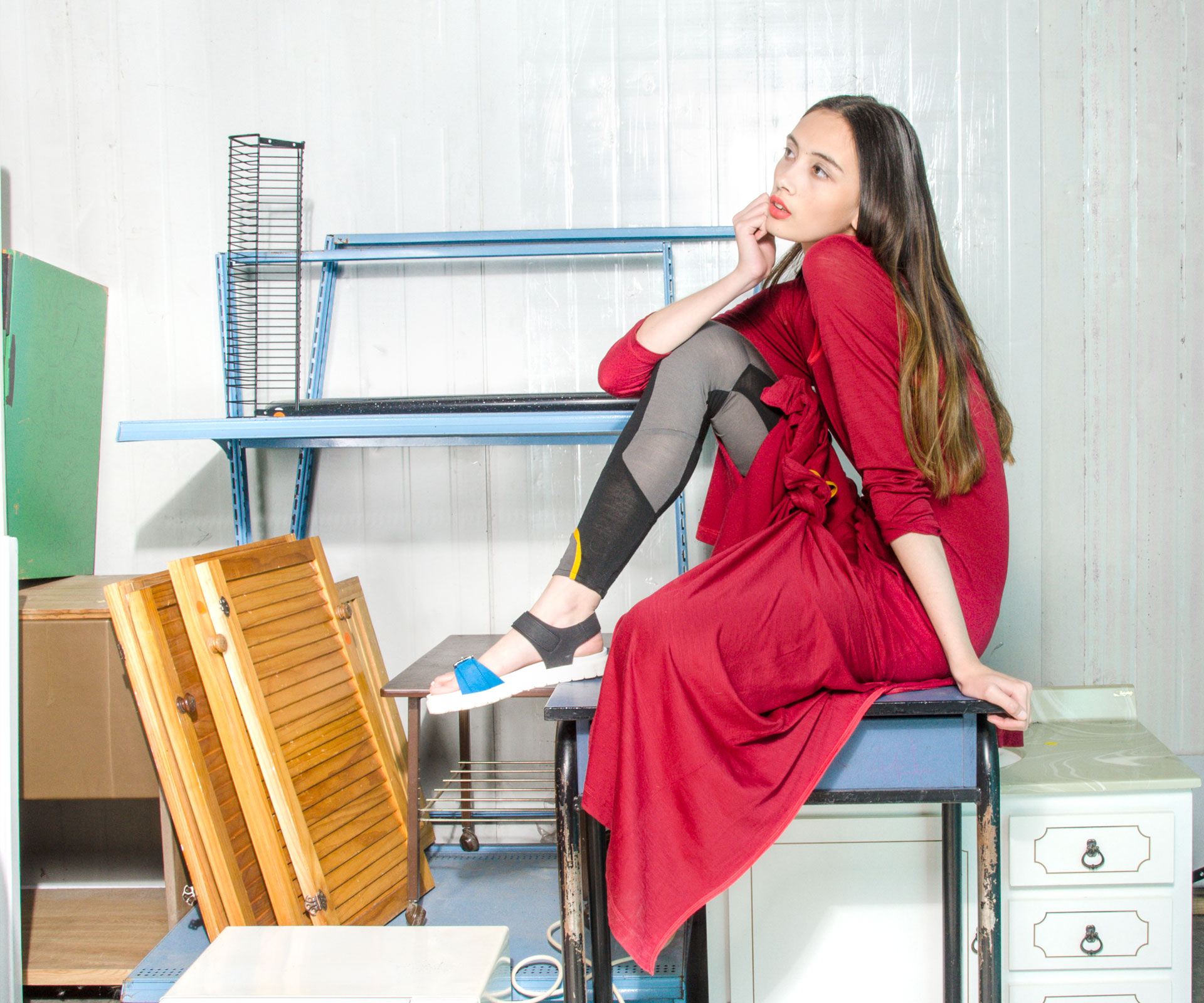
spacebetween.ac.nz|@space__between
“Most t-shirts have probably travelled more than the average person in New Zealand, but we don’t really factor that into our decision-making, or the cost,” says Jennifer Whitty, senior lecturer in fashion design at Massey University, academic researcher and co-founder of fashion label Space Between.
With Holly McQuillan, Whitty has created a brand that provides a platform for social change as well as chic designs. The duo’s latest project, recycling never-worn clothes into new designs will likely be available mid-year via online pre-order. Whitty says around a third of clothes in stores are never sold and incinerated, and around a third of the clothes that are bought are never worn. A pre-order approach ensures less wastage.
Whitty travelled to London last year to give a presentation on sustainable fashion at Tate Britain in conjunction with an exhibition and research paper she was involved in at the Chelsea College of Arts. She is also a mentor for the UnSchool, a New York-based fellowship programme which focuses on designs supporting sustainability.

Jennifer Whitty, co-founder of Space Between.
“Currently we don’t pay the true cost for clothing,” says Whitty. “We only account for the cost of tools, buildings and labour – we don’t factor in what it costs to make a garment in terms of its impact on the environment, for example the use of renewable and non-renewable materials or the impact on people’s health and communities.”
It’s cheaper to ship an item across the globe three times than to make it locally, according to Whitty, but she believes costs will balance out once more brands convert to sustainable practices. Until then, she says designers are responsible for educating consumers about why ethical clothes costs more.
Words: Jessica-Belle Greer
For more, see this month’s Simply You magazine, visit our Facebook page, and follow us on Instagram.

